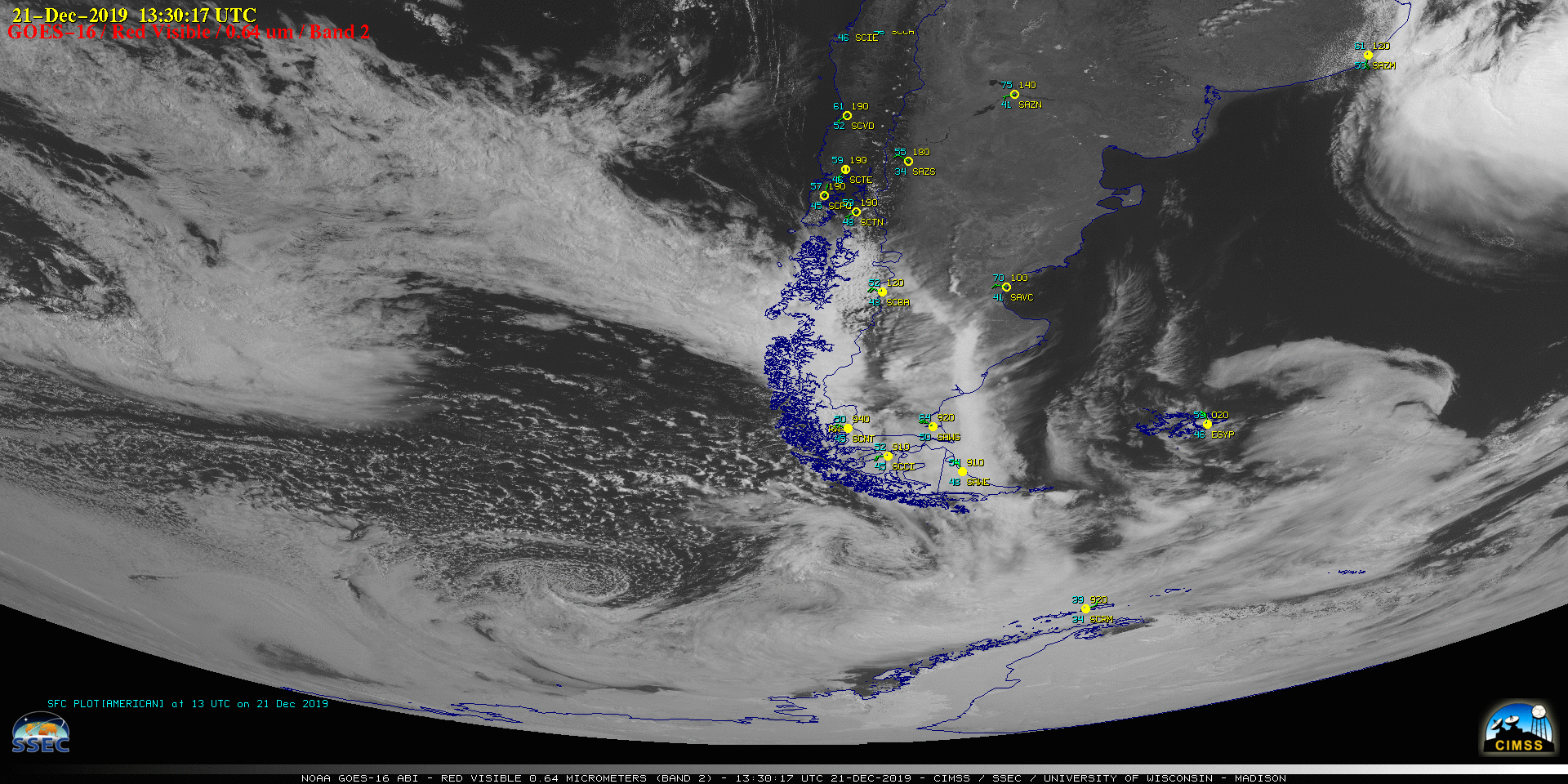Solstice images of Antarctica and Alaska

GOES-16 “Red” Visible (0.64 µm) images [click to play animation | MP4]
In spite of receiving 24 hours of sunlight, interior areas of the continent remained quite cold — due to high elevation and deep snow cover. For example, surface air temperatures at station 8927 near the center of Antarctica remained within the -25 to -35ºF range on 21 December (source).
In the Northern Hemisphere, GOES-17 (GOES-West) Visible images (below) revealed a few hours of illumination of the southern summits of Denali and nearby portions of the Alaska Range. Note the presence of much colder surface air temperatures (-20s and -30s F) north of the Alaska Range.![GOES-17 "Red" Visible (0.64 µm) images [click to play animation | MP4]](https://cimss.ssec.wisc.edu/satellite-blog/images/2019/12/G17_VIS_ALASKA_21DEC2019_B2_2019355_221356_GOES-17_0001PANEL_FRAME00134.GIF)
GOES-17 “Red” Visible (0.64 µm) images [click to play animation | MP4]


![Surface air temperatures (ºF) at automated weather stations across Antarctica [click to enlarge]](https://cimss.ssec.wisc.edu/satellite-blog/images/2019/12/191221_antarctica_temperatures_anim.gif)
![NOAA-20 VIIRS Infrared Window (11.45 µm) image at 2220 UTC [click to enlarge]](https://cimss.ssec.wisc.edu/satellite-blog/images/2019/12/ak_viirs_ir-20191221_222059.png)